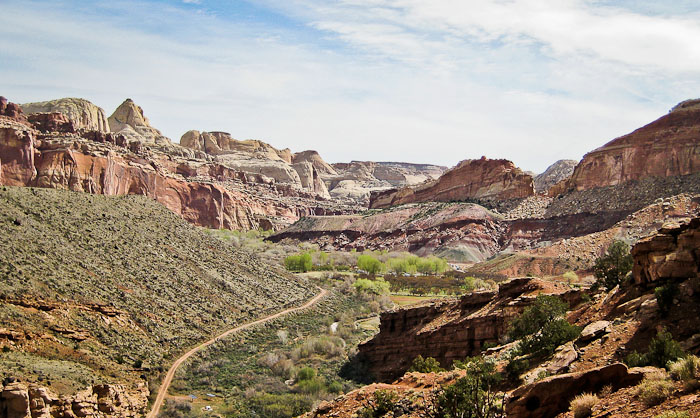Wednesday, April 20, 2011 - Capitol Reef National Park, Torrey UT
< previous day | archives | next day >

Fruita Orchards, Capitol Reef National Park, Torrey UT, April 20, 2011
Fruita orchards
The 2,000 trees in the old orchards in Fruita are in pretty good shape, bearing apricots, apples, plums, etc available to the public in season. The campground is set amidst the orchards, horses are in the paddocks. Cool.
Night camp
Site 7 - Fruita Campground, Capitol Reef National Park, Torrey UT
- No Verizon cell phone service is available here - and no broadband.
- Locate on my Night Camps map
- Check the weather here
What I've Learned
Such delicate goods as justice, love, honor and courtesy, and indeed all the things we care for, are valid everywhere but they are variously molded and often differently handled and sometimes nearly unrecognizable if you meet them in a foreign land, and the art of learning fundamental common values is perhaps the greatest gain of travel to those who wish to live at ease with their fellows.
The Middle of Everywhere, Freya Stark quoted by Mary Pipher, pg 339